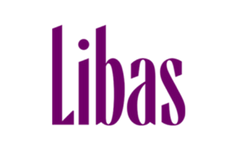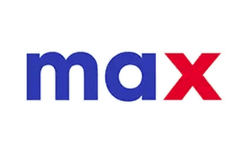AI - Driven Growth Solutions
Ecommerce SEO
A Comprehensive Guide

Infidigit is a CMO’s most preferred partner
2.2B+
Organic Sessions
15M+
Leads Generated
100+
Case Studies
60+
Awards & Recognitions
We are the trusted partners for brands to achieve organic success






































































KNOW ABOUT E-commerce
What is E-Commerce SEO ?
Ecommerce SEO is the process of optimizing an online store to improve its visibility in search engine results. By targeting specific keywords, enhancing website structure, and creating high-quality content, ecommerce SEO helps your products rank higher when potential customers search for them. This includes optimizing product pages, category pages, and even blogs to attract organic traffic.
Ecommerce SEO is the practice of optimizing an online store to improve its visibility and ranking in search engine results pages (SERPs). It focuses on driving organic traffic to your ecommerce website by ensuring that potential customers can find your products and services when they search online. Unlike general SEO, ecommerce SEO is tailored to the unique structure and goals of an online store, with a strong emphasis on product discoverability and conversion optimization.
At its core, ecommerce SEO involves:
- Keyword Optimization: Researching and targeting specific terms your audience uses to search for products.
- Product Page Enhancements: Crafting detailed, compelling product descriptions, optimizing titles, meta tags, and using high-quality images.
- Category Page Optimization: Structuring category pages to make them user-friendly and easily navigable.
- Technical SEO: Improving site speed, mobile responsiveness, and ensuring proper indexing of your pages.
- Content Marketing: Creating valuable content such as blogs, buying guides, and FAQs to attract and retain visitors.
- Link Building: Acquiring high-quality backlinks to boost domain authority and page rankings.
Effective ecommerce SEO not only increases your website’s visibility but also builds trust with potential customers. By aligning your site with what search engines prioritize—relevance, speed, and user experience—you make it easier for shoppers to find exactly what they need while boosting your sales and revenue.
With ecommerce SEO, you’re not just driving traffic; you’re attracting the right audience—people actively searching for your products—making it one of the most cost-effective and sustainable strategies for growing your online business.
Q&A
Unlocking Answers to eCommerce SEO Challenges
We create success stories like these for your brand
Strategies
Mastering Ecommerce SEO: 24 Proven Strategies
Plans
SEO Plans That Grow with Your E-Commerce Business
Lite
Boost your visibility and drive initial growth
- Complete SEO Audit
- 150 keywords & 50 pages optimized
- 15 content recommendations
- 100+ hours from SEO experts
- Customised reporting dashboards
Standard
Elevate your website to achieve higher visibility
- Complete SEO audit
- 240 keywords & 60 pages optimized
- 20 content recommendations
- 150+ hours from SEO experts
- Customised reporting dashboards
Pro
Supercharge your websites growth by advance strategies
- Complete SEO audit
- 320 keywords & 80 pages optimized
- 25 content recommendations
- 200+ hours from SEO experts
- Support for ecommerce tracking setup
- Customised reporting dashboards
Our clients talk about their transformative growth journeys.


Carla Rabe

The Iconic


Achint Setia

Carla Rabe
Product Lead at Superbalist

The Iconic
Head of SEO at THE ICONIC

Achint Setia
VP Marketing at Myntra


Suresh Chettiar


Manish Dubey


Awant Bhagat

Suresh Chettiar
Marketing and Product Head at NUUU

Manish Dubey
CMO, ICICI Prudential Life Insurance Company Limited

Awant Bhagat
Head of Digital Marketing at Stader


Vipul Oberoi


Lara Salomon

Vipul Oberoi
Director - Marketing, CSR & Learning Solutions at D&B

Lara Salomon
Marketing Specialist at Solid Systems


Anurag Goyal

Anurag Goyal
Sr. Manager - Digital Marketing at Extramarks


Altaf Saiyed
Founder of Traya

Altaf Saiyed
Founder of Traya


Aparna Acharekar


Rituj Kate

Aparna Acharekar
Programming Head at Zee5

Rituj Kate
SM – Product at Dream11


Nidhi Gupta


Manan Bajoria

Nidhi Gupta
Marketing Assistant at Tata Consumer Products

Manan Bajoria
AVP | Growth, Ixigo
Other Solutions
More Ways to Drive Results
Search Engine Optimization
Unlock higher rankings, quality traffic, and increased conversions through tailored award-winning SEO strategies.
Conversion Rate Optimization
Enhance your website that drives users to complete a desired action to become your customer.
Website Development
Latest web development frameworks, responsive design techniques, and robust backend systems to ensure your website is fast, secure & seamless.
App Store Optimization
Optimise your mobile app with our award-winning ASO strategies that will lead to higher rankings & installs on Play Store & App Store.
Content Writing
Craft your brand narrative efficiently with our skilled writers, tailoring content strategies to effectively convey your story.
Local SEO
Boost local visibility, attract quality traffic, and drive conversions with tailored Local SEO strategies.
YouTube SEO
Drive video growth, attract loyal subscribers, and amplify engagement with tailored strategies.
Amazon SEO
Enhance your Amazon presence, capture more buyers, and drive sales with custom optimization strategies.
Link Building
Strengthen your site’s authority, attract quality traffic, and improve SEO with expert link building.
Summary
Ecommerce SEO: Driving Visibility and Sales
Ecommerce SEO is the process of optimizing online stores to improve their visibility on search engines, helping potential customers discover your products. Unlike traditional SEO, it focuses on driving organic traffic to product and category pages, enhancing the user experience, and boosting conversions. Key elements include keyword research, high-quality product descriptions, mobile optimization, and site speed improvements. By implementing effective ecommerce SEO strategies, businesses can attract the right audience, increase sales, and achieve long-term growth in the competitive online marketplace.
Additionally, ecommerce SEO builds brand credibility by ensuring your site ranks for relevant searches and provides valuable content. It enables businesses to reduce dependence on paid ads by driving sustainable organic traffic. A well-optimized ecommerce site not only increases visibility but also converts visitors into loyal customers.
Industries
Discover how we can help across various industries
Locations
We drive growth Worldwide, delivering solutions wherever you are
FAQs on Ecommerce SEO
How useful was this post?
0 / 5. 0



























































